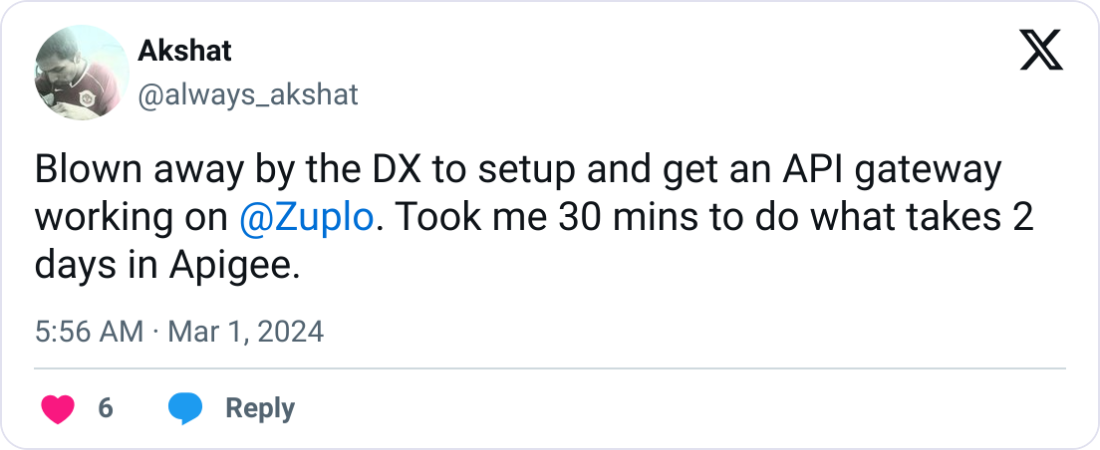API compatibility is the critical foundation that determines whether your API will work seamlessly with testing frameworks across changing environments. When your API and testing tools align perfectly, development flows smoothly; when they clash, you face failed tests, false positives, and elusive bugs that damage user experience.
Think of your API ecosystem like a well-orchestrated symphony—protocols, data formats, authentication methods, and testing frameworks must harmonize to create reliable software. Without this harmony, even the most sophisticated automation crumbles, leaving your team to manually untangle compatibility issues instead of building valuable features. Let's explore how to maintain this delicate balance as both APIs and testing tools continue to evolve.
- The Four Pillars of API Testing Compatibility
- The Evolution of API Testing: From Manual to Automated Excellence
- The Real Business Impact of API Compatibility Issues
- Must-Have Compatibility Features in Modern API Testing Tools
- Expert Analysis: Leading API Testing Tools Compared
- Real-World Implementation: Making It Work in Practice
- Future-Proofing Your API Testing Strategy
- The Compatibility Foundation: Building for the Future
The Four Pillars of API Testing Compatibility#
Building reliable API testing requires solid foundations beneath your code. These four essential layers help you craft testing frameworks that stand the test of time.
Protocol-Level Compatibility#
This fundamental layer ensures your API and testing tools speak the same language. Different APIs use distinct protocols with unique communication styles:
- REST APIs communicate via standard HTTP methods (GET, POST, PUT, DELETE) and status codes.
- SOAP APIs rely on XML-based messaging.
- GraphQL enables querying specific data through a single endpoint.
- gRPC leverages HTTP/2 for high-performance communication.
Your automated testing tools must support these protocols to effectively test API behavior. A testing framework optimized for REST will struggle with GraphQL's query-based approach—creating blind spots in your testing coverage.
Data-Level Compatibility#
Modern APIs typically exchange information using JSON or XML, and your testing framework must parse and validate these formats correctly. Effective data compatibility involves:
- Schema validation against predefined structures
- Handling nested data hierarchies
- Correctly interpreting diverse data types
- Managing serialization/deserialization processes
When your testing tools can't properly process the data your API handles, you're essentially testing blind—unable to verify that the right information flows through your system.
Authentication Compatibility#
APIs implement various security mechanisms that your testing tools must support. These mechanisms include:
- Basic authentication with username/password
- API keys for identification
- OAuth 2.0 token-based authorization
- JSON Web Tokens (JWT) for secure claims
- Advanced patterns like Backend for Frontend authentication
Effective tests verify both successful authentication paths and security boundary enforcement—ensuring your API remains secure while accessible to authorized users. Implementing Role-Based Access Control in APIs further enhances security by ensuring users have appropriate permissions.
Functional Compatibility#
This layer verifies that your API works as expected when tested with your chosen tools:
- Accurate endpoint validation
- Proper response code handling
- Business logic verification
- Edge case and error condition testing
Integration testing confirms that your API functions correctly within larger workflows—because real-world usage rarely happens in isolation.
The Evolution of API Testing: From Manual to Automated Excellence#
The journey from handcrafted API tests to modern automation reflects our industry's maturation. This evolution shows not just how far we've come, but where compatibility challenges originated.
- Manual Testing Era: Developers using cURL or Postman to manually send requests and evaluate responses—effective but painfully slow.
- Semi-Automated Testing: Basic scripts automated request sending but required manual validation—an improvement, but still labor-intensive.
- Framework-Based Testing: Specialized frameworks emerged with test management and reporting capabilities—introducing true efficiency.
- Fully Automated Testing: Modern approaches integrate testing directly into CI/CD pipelines for continuous validation—the current gold standard.

Over 10,000 developers trust Zuplo to secure, document, and monetize their APIs
Learn MoreScaling Beyond Human Capacity#
Let's be honest—we humans aren't great at repetitive tasks:
- We get tired and miss things after testing the same endpoint for the tenth time
- Our attention wanders when checking long JSON responses
- We're inconsistent—sometimes we check everything thoroughly, sometimes we don't
- We can't possibly remember every edge case for every endpoint
Automated testing doesn't have these problems. It tests the same way every single time, never gets bored, and catches issues humans would miss after hours of testing. This is especially important given how complex APIs have become:
- Modern APIs often have hundreds of endpoints
- Each endpoint might need dozens of test cases
- Testing across multiple environments multiplies this workload
- Running full regression tests would take weeks manually
Automation handles all this in minutes or hours. What would take an entire QA team a month to test manually can run overnight with automation. That's not just an improvement—it's a complete transformation.
The Critical Compatibility Foundation#
Here's the thing about automation that people often miss—it's only as good as the compatibility between your API and testing tools:
- When your API doesn't play nice with testing tools, your fancy automation falls apart
- Changes to authentication methods can break entire test suites overnight
- New response formats can cause false test failures across the board
- Protocol changes might make your testing tools completely useless
It's like building a high-performance sports car but forgetting to check if it fits on the road. No matter how sophisticated your automation becomes, it all depends on maintaining that critical compatibility between what you're testing and the tools you're using to test it. When compatibility breaks, your automation collapses, and bugs start slipping through to production.
The Real Business Impact of API Compatibility Issues#

API compatibility directly affects development efficiency, with tangible consequences for your team's ability to deliver quality software. When APIs maintain backward compatibility, developers focus on creating new features; when compatibility breaks, productivity plummets as teams battle integration problems.
Hidden Productivity Costs#
The financial impact extends beyond simple bug fixes:
- Developer time diversion: Engineers troubleshoot integration issues instead of building features
- Expanded regression testing: Testing cycles lengthen with each release
- Deployment bottlenecks: Incompatibilities freeze continuous delivery pipelines
- Technical debt accumulation: Quick fixes create long-term maintenance challenges
The "productivity paradox" affects many teams—automation tools should increase efficiency, but poor API compatibility creates additional work. Teams build compatibility layers, write extra tests, and create workarounds that nullify automation benefits.
Continuous Delivery Disruption#
Modern development teams rely on CI/CD pipelines for rapid deployment. API compatibility issues create significant barriers:
- Failed tests halt deployments
- Late-stage issues require costly fixes
- Teams lose confidence in automated processes
When APIs break compatibility, the entire delivery pipeline suffers, regardless of how sophisticated your automation might be.
Must-Have Compatibility Features in Modern API Testing Tools#
Effective API testing requires tools that handle diverse protocols, authentication methods, and data formats. Understanding essential requirements helps you select appropriate tools and build robust testing strategies.
Protocol Support Requirements#
Your testing tools must support multiple API types for comprehensive coverage:
- REST APIs: Support for HTTP methods, path parameters, query strings, and header manipulation
- GraphQL APIs: Query validation, resolver testing, and complex query structure handling
- gRPC APIs: Protocol Buffer support and HTTP/2 communication capabilities
- WebSocket APIs: Persistent connection maintenance and real-time message validation
Gaps in protocol support create blind spots in your testing coverage.
Authentication Mechanism Compatibility#
Modern APIs implement various security measures that testing tools must properly handle:
- OAuth 2.0: Managing token acquisition, validation, and automatic refresh
- API Keys: Secure storage with support for different scopes and permissions
- JWT: Token signature verification, expiration handling, and claims testing
- Basic Authentication: Secure credential management, especially for legacy systems
Your testing framework must support these methods to properly evaluate security implementation.
Response Format Handling#
APIs deliver data in various formats that testing tools must parse and validate:
- JSON: Schema validation to verify structure and content
- XML: XPath validation and namespace handling
- Protocol Buffers: Binary format parsing and validation
Beyond format parsing, testing tools should validate content structure against predefined schemas.
Environment Consistency Strategies#
APIs often behave differently across environments, creating challenges:
- Configuration variations between local, staging, and production
- Data differences producing environment-specific responses
- Integration dependencies that may be mocked in some environments
Using mock servers to simulate API interactions during early testing helps maintain consistency across environments. Implementing essential API gateway features can further streamline the process.
Expert Analysis: Leading API Testing Tools Compared#
The marketplace overflows with tools promising comprehensive API testing support. This practical breakdown helps you identify which solutions actually deliver on their promises.
REST API Testing Tools#
- Postman excels in CI/CD integration through Newman, enabling automated Collection execution within Jenkins, GitLab, and CircleCI. Its JavaScript-based testing environment provides exceptional flexibility, allowing complex test logic using external libraries. Postman's automated testing capabilities include webhook support for event-triggered testing.
- REST Assured integrates seamlessly with Java environments, working naturally with JUnit and TestNG. Its code-first approach appeals to developers who prefer programmatic API validation over GUI-based testing.
- Karate DSL combines API testing with Cucumber's BDD syntax, bridging technical implementation and business requirements. This approach benefits teams using collaborative specification development. Karate runs standalone or integrates with Java test runners for environmental flexibility.
GraphQL-Specific Testing Tools#
GraphQL testing requires specialized capabilities that standard testing frameworks often lack.
- Apollo Client Testing provides schema compatibility checking, validating queries against schemas during testing to prevent production issues. Its mock resolver capabilities simulate GraphQL responses without connecting to actual servers, supporting isolated testing environments.
- GraphQL Playground offers excellent developer workflow integration through interactive query editing and automatic schema introspection. It integrates with API gateways for testing across microservices architectures and saves queries and headers for seamless complex operation testing.
These specialized tools address GraphQL-specific challenges like nested query validation, fragment reuse, and directive handling that standard testing frameworks don't support.
Performance and Load Testing Tools#
Performance testing tools require specific integration capabilities and must be able to simulate real-world scenarios, including handling API rate limiting.
- JMeter provides extensive extension points through its plugin architecture, supporting various protocols and data formats. Its scriptability options include BeanShell, JSR223, and Java sampler components for custom test logic, though CI/CD integration can be challenging.
- k6 uses a JavaScript-based approach that aligns with modern development workflows. Its code-first methodology leverages familiar JavaScript syntax, reducing learning curves. The tool's cloud service compatibility enables scalable load testing without infrastructure management.
- Gatling features native Scala integration, making it ideal for Scala-based microservices. Its detailed reporting capabilities work well with CI/CD pipelines, providing clear performance metric visualizations.
These tools are crucial for identifying bottlenecks and implementing API performance optimization strategies.
Finding Your Perfect Testing Match#
Selecting the right API testing tools requires looking beyond flashy marketing to assess what truly matters for your specific needs:
- Evaluate your team's technical profile and preferences. Developers comfortable with code will thrive with REST Assured or similar programmatic tools, while testers from non-coding backgrounds might prefer Postman's visual interface.
- Consider your existing technology ecosystem. Tools that integrate with your current CI/CD pipeline, version control system, and programming languages will create less friction in implementation.
- Assess the full API lifecycle you need to test. Some tools excel at quick exploratory testing but struggle with regression suites, while others shine in automated pipelines but make ad-hoc testing cumbersome.
- Look for community support and documentation quality. Even the most powerful tool becomes frustrating when you can't find answers to common problems or usage patterns.
- Test before committing. Most quality tools offer free trials or community editions that let you validate compatibility with your specific API structures before making significant investments.
- Don't overlook security testing capabilities. The best tools include features for testing authentication flows, authorization boundaries, and other security concerns alongside functional testing.
- Consider scalability needs as your API grows. Will the tool that works for 10 endpoints still perform well when you have 100 or 1,000? Performance under load matters for growing systems.
Real-World Implementation: Making It Work in Practice#

Theory meets reality when implementing compatibility testing across different architectures. These proven strategies help bridge the gap between ideal testing scenarios and practical constraints.
Microservices Architecture Testing#
In microservices environments, contract testing has become essential for ensuring API compatibility. Tools like Pact and Spring Cloud Contract excel in distributed architectures by focusing on service consumer/provider contracts rather than traditional end-to-end testing. The key point to remember here — establishing clear contract ownership boundaries is essential. Consumer teams must take responsibility for updating contracts when requirements change.
Code-First API Development#
Code-first API development presents unique challenges when integrating with testing tools. Frameworks generating API specifications from code require adaptive testing approaches.
For TypeScript-based APIs, Jest combined with Supertest works effectively with programmatically defined endpoints. A typical implementation might look like:
// Example TypeScript API test with Supertest
import request from "supertest";
import { app } from "../app";
describe("User API", () => {
it("should return user profile when authenticated", async () => {
const response = await request(app)
.get("/api/users/profile")
.set("Authorization", `Bearer ${validToken}`)
.expect(200);
expect(response.body).toHaveProperty("id");
});
});The key to success is generating OpenAPI specifications automatically from code, creating a common language between developers and testers.
Legacy System Integration#
Legacy systems present significant compatibility challenges when integrating with modern testing tools, often using proprietary protocols or lacking documentation.
Creating adapter layers between legacy interfaces and modern standards proves effective. When testing mainframe-based financial systems, a successful approach includes:
- Protocol adapters converting proprietary formats to JSON
- Mock servers simulating legacy behavior for isolated testing
- Response normalizers standardizing outputs for consistent validation
This adapter pattern enables modern testing tools like Postman and REST Assured to work with legacy systems without requiring legacy system modifications.
Future-Proofing Your API Testing Strategy#
The API landscape evolves rapidly with new standards and technologies. Preparing your testing approach for these changes ensures long-term effectiveness.
Embracing Emerging Standards#
Beyond traditional REST, AsyncAPI is gaining prominence for event-driven architectures, documenting and testing asynchronous APIs using MQTT, WebSockets, and Kafka. For systems using real-time events or message queues, AsyncAPI support is becoming essential. HTTP/3, built on the QUIC protocol, offers significant performance advantages by eliminating head-of-line blocking and reducing connection setup times.
Leveraging AI for Smarter Testing#
AI and machine learning are transforming API testing through tools that:
- Generate test cases based on API usage patterns
- Identify anomalous API behavior without explicit test definitions
- Automatically fix test scripts when APIs change
- Predict potential compatibility issues proactively
These capabilities become increasingly valuable as APIs grow more complex. Consider incorporating AI-assisted testing tools to stay ahead of compatibility challenges.
Adopting Infrastructure-as-Code for Testing#
Applying infrastructure-as-code principles to testing configurations provides:
- Version-controlled test environments matching API versions
- Consistent testing configurations across teams
- Automated scaling for performance testing
- Simplified recovery from environment issues
Treating testing infrastructure as code—versioned, reviewed, and automatically deployed—creates a resilient foundation that evolves alongside your APIs.
The Compatibility Foundation: Building for the Future#
Mastering API compatibility with automated testing tools isn't just a technical challenge—it's a business imperative that directly impacts your development velocity and product quality. By implementing proactive compatibility planning, choosing the right testing tools for your stack, and preparing for emerging standards, you build a foundation that turns potential compatibility headaches into competitive advantages.
Zuplo's developer-focused platform provides the tools you need to maintain compatibility while accelerating development. With features designed for testing integration, protocol support across multiple API types, and seamless authentication handling, Zuplo removes the friction points that typically slow teams down. Sign up for a free Zuplo account today and experience just how seamless API management can be.